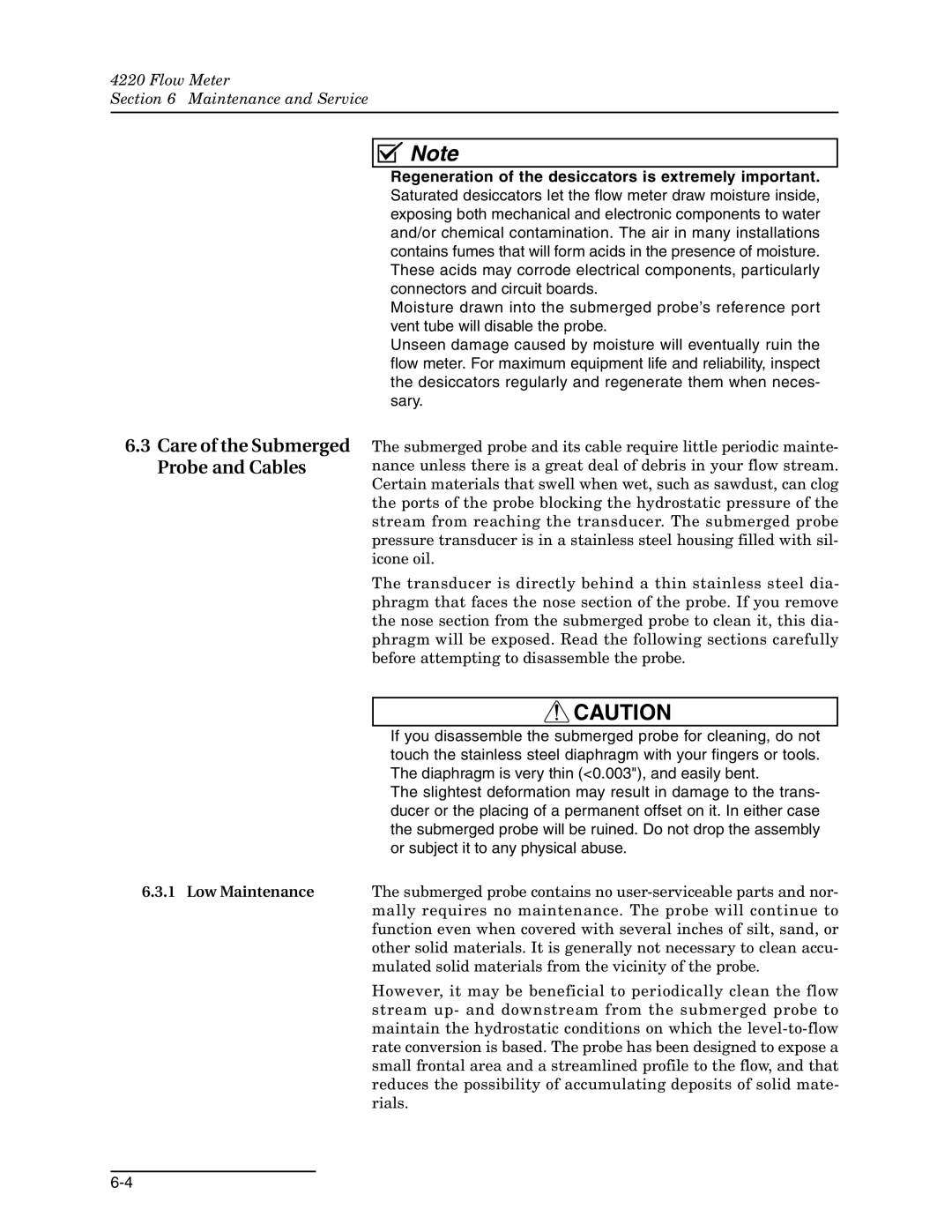
4220 Flow Meter
Section 6 Maintenance and Service
6.3Care of the Submerged Probe and Cables
6.3.1 Low Maintenance
![]()
![]()
![]()
![]()
![]() Note
Note
Regeneration of the desiccators is extremely important. Saturated desiccators let the flow meter draw moisture inside, exposing both mechanical and electronic components to water and/or chemical contamination. The air in many installations contains fumes that will form acids in the presence of moisture. These acids may corrode electrical components, particularly connectors and circuit boards.
Moisture drawn into the submerged probe’s reference port vent tube will disable the probe.
Unseen damage caused by moisture will eventually ruin the flow meter. For maximum equipment life and reliability, inspect the desiccators regularly and regenerate them when neces- sary.
The submerged probe and its cable require little periodic mainte- nance unless there is a great deal of debris in your flow stream. Certain materials that swell when wet, such as sawdust, can clog the ports of the probe blocking the hydrostatic pressure of the stream from reaching the transducer. The submerged probe pressure transducer is in a stainless steel housing filled with sil- icone oil.
The transducer is directly behind a thin stainless steel dia- phragm that faces the nose section of the probe. If you remove the nose section from the submerged probe to clean it, this dia- phragm will be exposed. Read the following sections carefully before attempting to disassemble the probe.
![]() CAUTION
CAUTION
If you disassemble the submerged probe for cleaning, do not touch the stainless steel diaphragm with your fingers or tools. The diaphragm is very thin (<0.003"), and easily bent.
The slightest deformation may result in damage to the trans- ducer or the placing of a permanent offset on it. In either case the submerged probe will be ruined. Do not drop the assembly or subject it to any physical abuse.
The submerged probe contains no
However, it may be beneficial to periodically clean the flow stream up- and downstream from the submerged probe to maintain the hydrostatic conditions on which the
